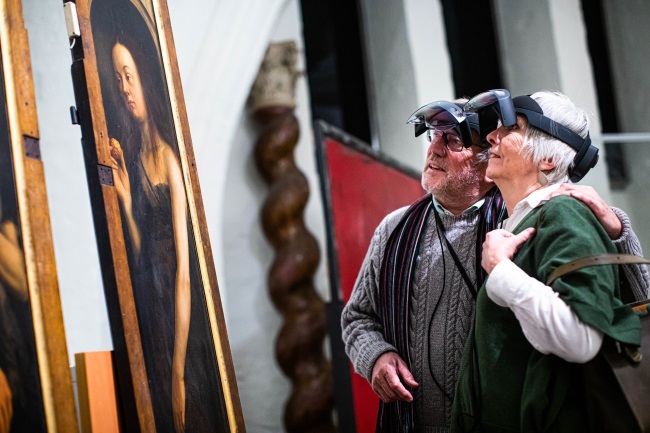Our latest Belgian art article looks at an exceptional ongoing restoration.
As part of one of the most ambitious restoration projects undertaken in Flanders, St. Bavo’s Cathedral in Ghent is set to reveal a revolutionary new visitor experience on 25 March 2021. At the same time, the world-famous Ghent Altarpiece by Jan and Hubert Van Eyck will be moved to a new location.
The Cathedral crypt has also been extensively adapted for visitors to experience the artwork’s remarkable history, via new visual technology. The Ghent Altarpiece is widely recognised as one of history’s most influential works of art. Its breath-taking splendour is made up of twelve panels, painted recto verso, with its most iconic panel ‘The Adoration of the Mystic Lamb’ at its centrepiece.
The masterpiece has also been subject to numerous historic restorations, but the most recent work carried out by the Royal Institute for Cultural Heritage (KIK-IRPA) provided a much needed, sympathetic repair and restoration to the polyptych’s central image and lower register panels. These also formed part of the recently acclaimed Van Eyck – An Optical Revolution exhibition at the Fine Arts Museum Ghent (MSK) in 2020. A bespoke glass case has been designed to house the polyptych and will re-create the optimum conditions for acclimatisation, necessary for the preservation of this masterpiece.
The move to the Sacrament Chapel was chosen for its proximity to its original home in the ambulatory, but also because its tranquil setting is more conducive to an intimate encounter with the painting, with a bigger surface area. Visitors will be given the aid of a personal virtual digital assistant to lead them from chapel to chapel, prior to viewing the main painting. In each of these chapels, Augmented Reality (AR) glasses or an AR tablet will allow them to view a scene, enhanced with an additional layer of virtual experience, superimposed to create a life-like visual effect. The experience will be further enhanced with the powerful and evocative commentary of storytelling, transporting visitors back through time to the period when the Ghent Altarpiece was painted to offer a potted history of its chequered past.







